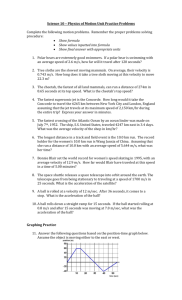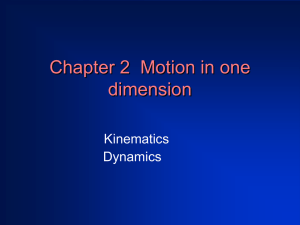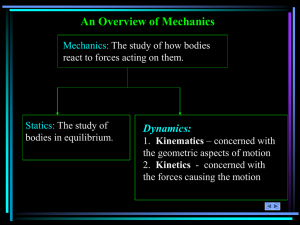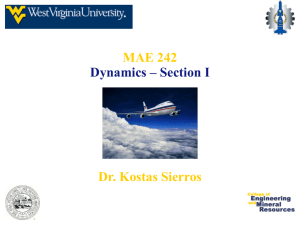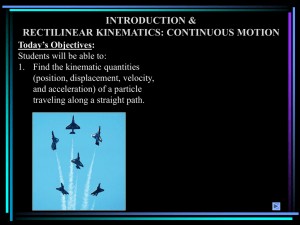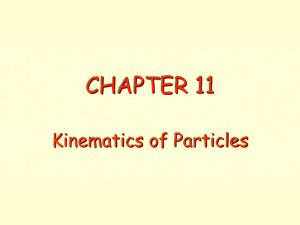File
advertisement
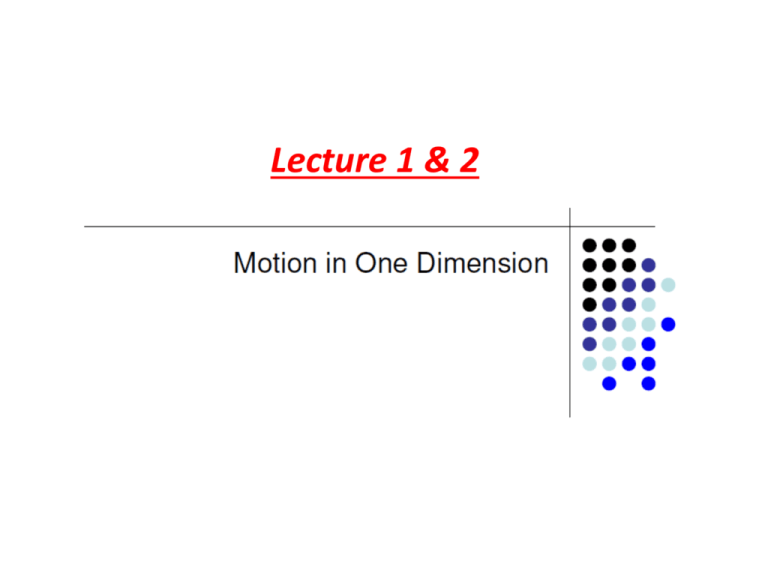
Lecture 1 & 2 Kinematics equation, cont. When an object moves with constant acceleration, the instantaneous acceleration at any point in a time interval is equal to the value of the average acceleration over the entire time interval. So, we can write a = then Kinematics equation, cont. Kinematics equation, cont. Problem: A golf ball is released from rest at the top of a very tall building. Neglecting air resistance, calculate the position and velocity of the ball after 1.00 s, 2.00 s, and 3.00 s. Solution: t (s) v (m/s) y (m) 1.00 2.00 3.00 -9.8 -19.6 -29.4 - 4.9 -19.6 - 44.1 Remarks: The minus signs on v mean that the velocity vectors are directed downward, while the minus signs on y indicates positions below the origin. The velocity of a falling object is directly proportional to the time, and the position is proportional to the time squared, results first proven by Galileo. Home work: 1. Calculate the position and velocity of the ball after 4.00 s has elapsed. 2. If the velocity of a particle is nonzero, can the particle’s acceleration be zero? Explain. 3. If the velocity of a particle is zero, can the particle's acceleration be zero? Explain. 4. 4. If a car is traveling eastward, can its acceleration be westward? Explain.






